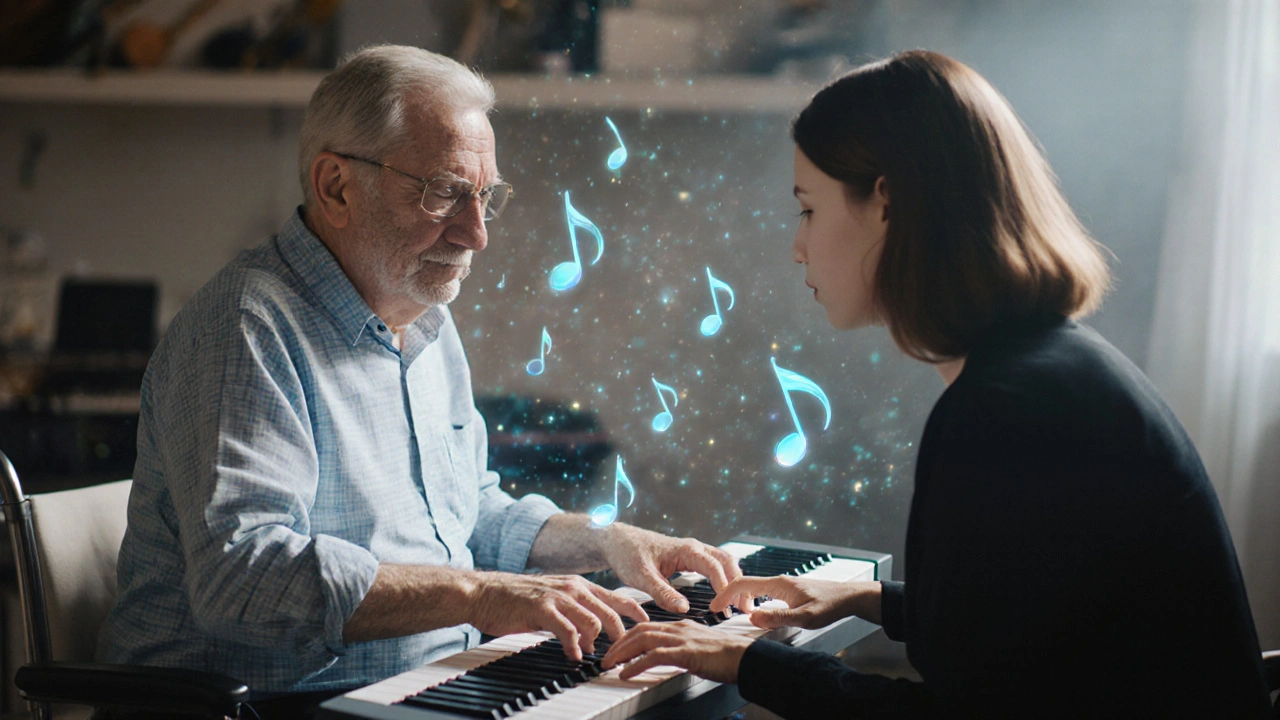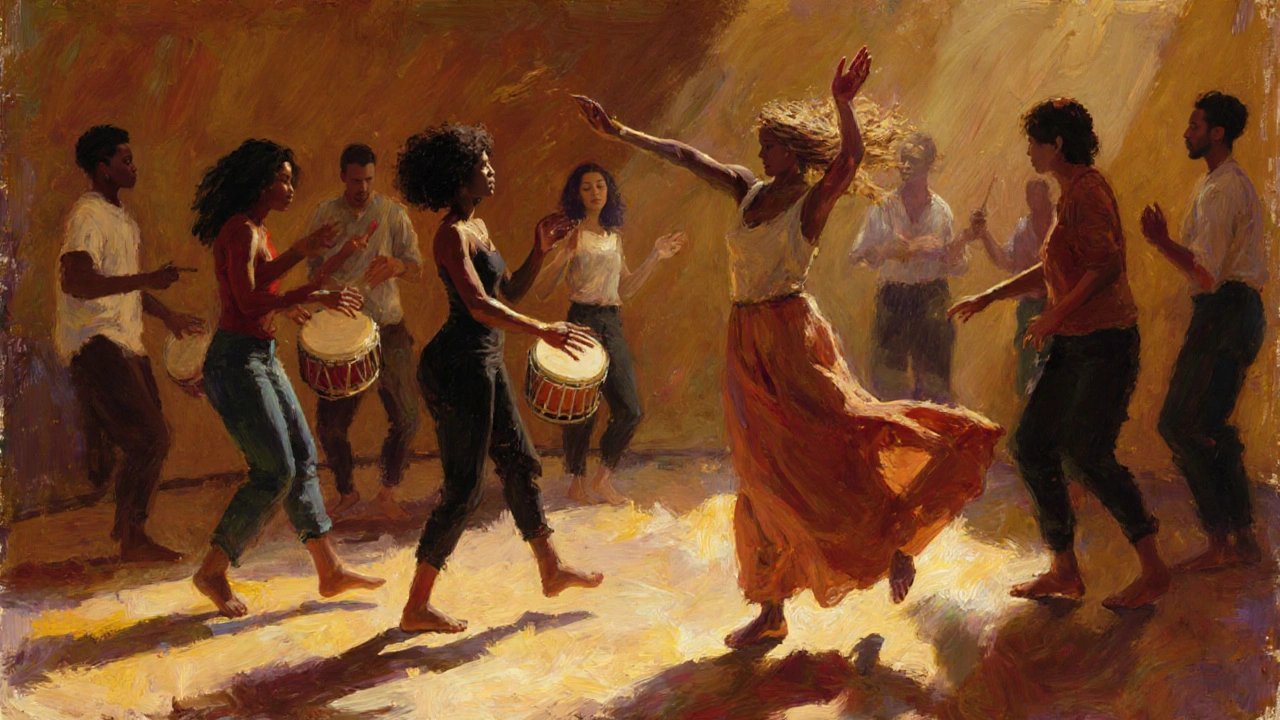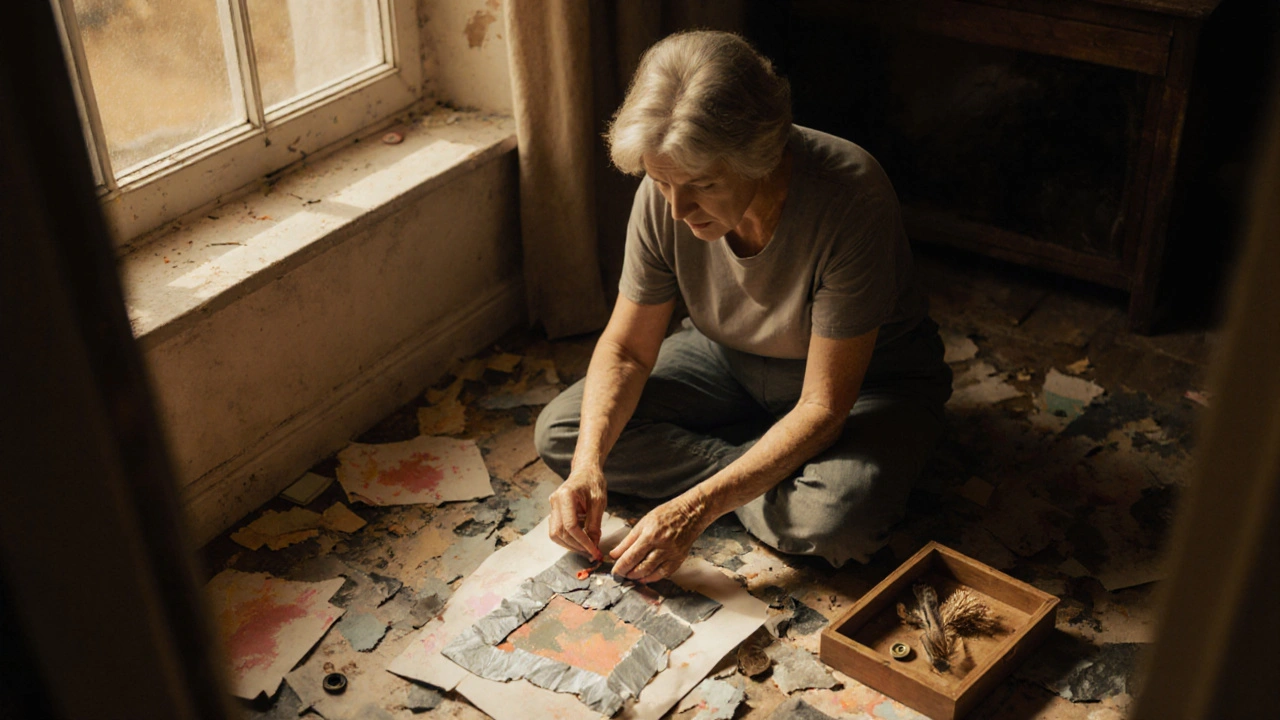Imagine sitting in a quiet room, brush in hand, not trying to paint a masterpiece, but just letting color move across the paper. No one asks if it’s good. No one judges the lines. You’re not trying to impress anyone-you’re just feeling. That’s not just art. That’s therapy.
Creative arts therapies aren’t about becoming an artist, musician, or dancer. They’re about using those forms to heal what words can’t reach. Whether it’s through painting, drumming, moving to rhythm, or writing poems you never show anyone, these therapies help people process trauma, manage anxiety, and find meaning when life feels broken.
What Exactly Are Creative Arts Therapies?
Creative arts therapies combine psychology with artistic expression. They’re not hobbies with side benefits-they’re evidence-based clinical practices led by certified professionals. The five main types are art therapy, music therapy, dance/movement therapy, drama therapy, and poetry or bibliotherapy. Each one uses a different medium, but they all work the same way: by tapping into non-verbal parts of the brain where emotions live.
Unlike talk therapy, where you have to find the right words, creative arts therapies let your body and instincts lead. A child who’s been through abuse might draw a house with no doors. A veteran with PTSD might drum out a heartbeat rhythm that matches their panic attacks. A person with dementia might suddenly recall a song from their youth and start singing-words they haven’t spoken in years.
These therapies are backed by real research. A 2023 meta-analysis in the Journal of Clinical Psychology found that art therapy reduced symptoms of depression in 78% of participants across 27 studies. Music therapy improved communication in children with autism more effectively than standard behavioral interventions in 6 out of 8 randomized trials. Dance therapy lowered cortisol levels by an average of 23% in adults with chronic stress, according to a study from the University of Florida.
How Art Therapy Helps When Words Fail
Art therapy doesn’t require skill. You don’t need to know how to draw. You just need to be willing to make a mark. A crayon, a sponge, clay, even torn magazine pages-they’re all tools.
One woman, in her early 50s, started art therapy after her husband died suddenly. She couldn’t talk about it. Every time she tried, she’d choke up and shut down. Her therapist gave her a large sheet of paper and a box of pastels. No instructions. Just: “Do whatever feels right.”
She spent 45 minutes painting a storm. Dark blues, violent reds, jagged lines. Then, without saying a word, she tore the paper in half and taped it back together with silver duct tape. In the next session, she brought in a small wooden box. Inside, she placed the torn piece. She called it “My Grief, Held.”
That box became her anchor. She didn’t need to explain it. The act of making it, the physicality of tearing and mending, said everything. Over time, she started adding small objects to the box-a feather, a button from his coat, a dried flower. The art became her language.
Art therapy works because it bypasses the prefrontal cortex-the part of the brain that overthinks, criticizes, and controls. Instead, it activates the limbic system, where emotion and memory live. That’s why it’s so effective for trauma, autism, and neurological conditions like Alzheimer’s.
Music Therapy: More Than Just Listening to Songs
People often think music therapy means playing calming tunes to relax. That’s not it. It’s active, structured, and deeply personal.
A music therapist might ask someone with depression to improvise a melody on a keyboard using only three notes. Or have a teenager with social anxiety create a song about their feelings and record it. The goal isn’t to make a hit single-it’s to give emotion a structure to live in.
One study at Johns Hopkins followed 40 adults with severe depression. Half received standard antidepressants and talk therapy. The other half got the same plus weekly music therapy sessions where they composed songs with a therapist. After 12 weeks, the music therapy group showed a 42% greater reduction in depressive symptoms. Their brain scans showed increased activity in the reward centers-something talk therapy alone rarely achieves.
Music therapy is also powerful for people with speech loss. After a stroke, a man couldn’t say his own name. But he could sing “Happy Birthday.” His therapist used that to rebuild his speech. Singing uses different neural pathways than speaking. By singing phrases over and over, his brain rewired itself. Within six months, he could say “I love my daughter” without singing.

Dance and Movement Therapy: Healing Through the Body
When you’re anxious, your body tenses. When you’re depressed, you move slowly-or not at all. Dance therapy doesn’t teach steps. It teaches you to listen to your body again.
A typical session might start with grounding: standing barefoot, feeling the floor, breathing. Then, the therapist might play a slow rhythm and invite you to move however your body wants. No mirrors. No corrections. Just movement.
For people with eating disorders, this is life-changing. One young woman, recovering from anorexia, couldn’t stand to look at her body. In dance therapy, she was asked to move like a tree in the wind. At first, she barely shifted. But over weeks, she began to sway. Then to spin. Then to jump. She didn’t say a word about her body. But her movement changed. And so did her relationship to it.
Dance therapy is also used with veterans. Many struggle with hypervigilance-always scanning for danger. A therapist might have them move in sync with a partner, building trust through rhythm. One Marine told his therapist, “For the first time since I came home, I felt safe in my own skin.”
Why These Therapies Work Better Than You Think
Traditional talk therapy relies on language. But not all trauma lives in words. Some memories are stored as sensations-tightness in the chest, a smell, a sound. Creative arts therapies access those directly.
Neuroscience shows that when you create art, your brain releases dopamine and serotonin. That’s the same chemical cocktail triggered by exercise, laughter, or falling in love. But here’s the kicker: you don’t need to feel good to benefit. Even if you’re crying while painting, your brain is still healing.
These therapies also reduce the need for medication. A 2024 study in the Journal of Affective Disorders found that patients with generalized anxiety disorder who attended 10 sessions of art or music therapy reduced their use of benzodiazepines by 65%. Many stopped entirely.
They’re also accessible. You don’t need to be “talented.” You don’t need money for fancy equipment. A child in a refugee camp can draw with charcoal on cardboard. An elderly person in a nursing home can tap a rhythm on a table. The tools are simple. The impact isn’t.

Who Can Benefit?
Creative arts therapies aren’t just for people with mental illness. They help anyone who’s carrying something heavy.
- Children with autism: Use drama therapy to practice social cues through role-play.
- People with chronic pain: Use music or movement to shift focus away from discomfort.
- Survivors of violence: Use art to reconstruct a sense of safety and control.
- Caregivers: Use poetry to process grief without burdening loved ones.
- Older adults with dementia: Use familiar songs to trigger memories and reduce agitation.
One hospice program in Oregon started offering weekly drum circles for families of terminally ill patients. No one played perfectly. But the rhythm connected them. One father, whose daughter had cancer, said, “We didn’t talk about her dying. But we drummed about it. And for the first time, I didn’t feel alone.”
How to Get Started
You don’t need a license to explore creative expression. But if you want real therapeutic results, work with a certified professional.
Look for credentials like:
- ATR (Art Therapist, Registered) from the American Art Therapy Association
- MT-BC (Music Therapist, Board-Certified) from the Certification Board for Music Therapists
- BC-DMT (Board-Certified Dance/Movement Therapist) from the American Dance Therapy Association
Many hospitals, VA centers, schools, and community mental health clinics offer these services. Insurance often covers them if they’re prescribed by a doctor.
If you’re just exploring on your own, start small. Keep a sketchbook. Play an instrument for five minutes a day. Dance in your kitchen. Write a poem you never show anyone. Don’t aim for beauty. Aim for honesty.
Healing doesn’t always come from talking. Sometimes, it comes from making something that only your soul understands.
Are creative arts therapies scientifically proven?
Yes. Over 200 peer-reviewed studies since 2010 show measurable improvements in depression, anxiety, PTSD, autism, dementia, and chronic pain. Organizations like the American Psychological Association and the World Health Organization recognize these therapies as evidence-based treatments.
Do I need to be artistic to benefit?
No. Creative arts therapies focus on expression, not skill. A messy painting, a single drumbeat, a shaky dance-these are all valid. The goal isn’t to create a masterpiece. It’s to give your inner experience a way to be seen and held.
Can these therapies replace medication?
They can reduce the need for medication, especially for anxiety and depression. Many patients lower their doses or stop entirely under medical supervision. But they’re rarely used alone for severe conditions like bipolar disorder or schizophrenia. They work best alongside other treatments.
How long does it take to see results?
Some people feel relief after one session-especially with music or movement. For deeper issues like trauma, 8 to 12 weekly sessions are typical. Progress isn’t always linear. Sometimes, you feel worse before you feel better. That’s part of the process.
Is this covered by insurance?
Many insurance plans cover creative arts therapies if they’re provided by a licensed therapist and prescribed for a diagnosed condition. Medicare and Medicaid cover them in some states for veterans and seniors. Check with your provider or ask your therapist-they often help navigate billing.
